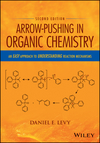At January's CSU Biotechnology Symposium, soon-to-be graduates from life sciences programs had many questions about relevant career paths. This is the second of three posts addressing questions specifically related to medicinal chemistry. The questions addressed in this post are:
- How does molecular modeling influence medicinal chemistry?
- How does natural product research relate to medicinal chemistry?
- How can natural products be matched to enzyme activity?
How does molecular modeling influence medicinal chemistry?
In my last post, the question "What is medicinal chemistry?" was answered. In that post, I discussed the role of a medicinal chemist in the context of a drug discovery program. In such a program, success is dependent upon the synergistic activities of scientists of many disciplines. Some of these disciplines are:
- organic chemistry
- biochemistry
- biology
- pharmacology
- analytical chemistry
- computational chemistry
Organic chemistry is necessary for the generation of drug candidates. Biochemistry is used to design the enzyme-based assays used to test drug candidates. Likewise, biology is used to design the cell-based assays and animal models of diseases. Pharmacology is applied to the actual testing of drug candidates in live animals and analytical chemistry is necessary to provide meaningful data regarding blood serum concentrations as well as initial drug purity assessments. Based on these specific roles, it is entirely appropriate to wonder where computational chemistry fits in.
Computational chemistry utilizes mathmatical algorithms and computer technology to:
- predict the achievable structural conformations of drug candidates
- image protein/enzyme structures based on X-ray crystallographic data
- predict protein/enzyme structures based on X-ray crystallographic data of related proteins/enzymes
- compare biological data of related structures as a tool to predict the activity of planned compounds
- study the enzyme binding site in the presence and/or absence of drug candidates
- design novel structures optimized to the shape and properties of relevant enzyme binding sites.
Because all of the above applications of computation chemistry effectively visualize what cannot be directly seen, each of these systems is a model designed to represent intended interactions within biological systems. Because these systems are models, computational chemistry is frequently termed "molecular modeling." While this technology was routinely unavailable to medicinal chemists until the 1980s, such technology is now indispensable in guiding the activities of medicinal chemists to more rapid successes.
How does natural product research relate to medicinal chemistry?
Nature has provided numerous biologically active compounds useful for medicinal purposes. Such compound classes include opiods, antibiotics and antifungals. While some compounds from these classes are commonly used as medicines (morphine, cocaine, penicillin, erythromycin, taxol, nystatin), most induce undesirable and potentially toxic side effects when administered to humans. The reason for this is clear - these compounds were designed by nature to benefit their non-human host organisms.
Because of nature's relatively inefficient optimization of biologically active molecules for human use, most natural products are best utilized as lead molecules in drug discovery programs. Through the systematic modification of natural substances, drug-like properties can be enhanced while minimizing undesirable and/or off-target effects. Thus, natural product research provides medicinal chemists a rich and valuable goldmine of lead molecules and potential drug candidates.
How can natural products be matched to enzyme activity?
Natural products are organic molecules produced by living organisms. While there are numerous living organisms that produce interesting substance, plants fungi and marine creatures generally receive the most attention.
The process of natural product discovery generally involves homogenization of large quantities of a given species such as a marine sponge. The liquefied sponge is then extracted with organic solvents. The materials being dissolved into the organic solvents are then isolated and separated by techniques such as high pressure liquid chromatography (HPLC). This initial chromatography step produces fractions that contain multiple natural compounds. As only natural products with biological activity are generally of interest, these crude fractions are screened against various enzymes. If a given fraction shows interesting activity, it is further purified to isolate its individual molecular components. These components are then screened against the enzymes of interest and the most active component is identified.
From this point, a map from a given sponge to a given natural product is identified. Using this map, the natural product of interest can be repeatedly isolated from the same species. However, the structure of the natural product is not yet known. In order to establish the structure, larger quantities must be isolated and subjected to analytical techniques such as mass spectrometry (MS) and nuclear magnetic resonance (NMR) spectroscopy. Additional structural information can be obtained by studying the products of chemical degradation. When a final structure is proposed, often the best proof of structure is total synthesis - the process of preparing a natural product from non-natural sources using synthetic organic chemistry. In fact, it is this process of total synthesis that provides some of the best training for graduate students interested in entering industries dependent on the discovery of pharmaceuticals, polymers and agrochemicals.





Compared with the glass reactor with jacket, the high quality stone crusher has wide applications. Here: www.toption-china.com/products/glass-reactor-with-jacket-10l. Generally speaking, the stone crusher machine may include vibrating feeder, stone jaw crusher, pex jaw crusher, vertical shaft impact crusher, vibrating screen, sand washing machine etc.
ReplyDelete